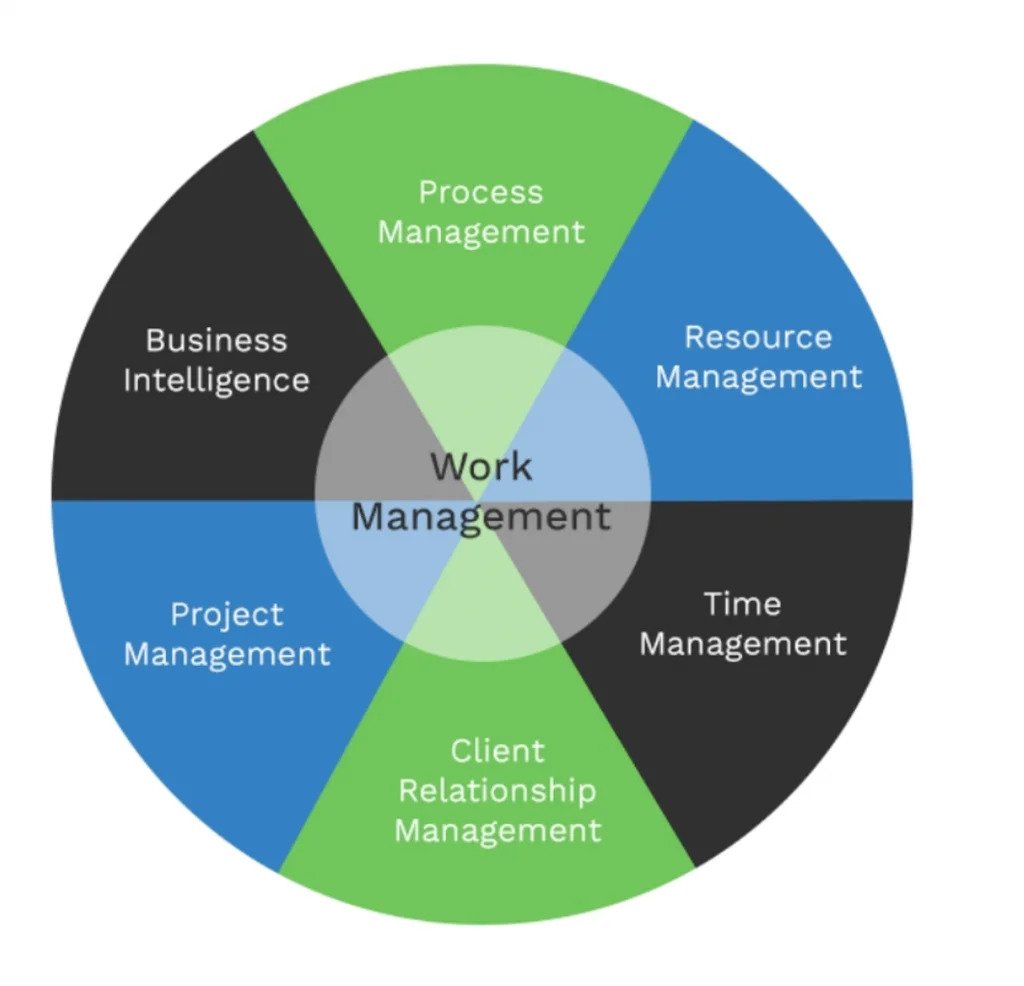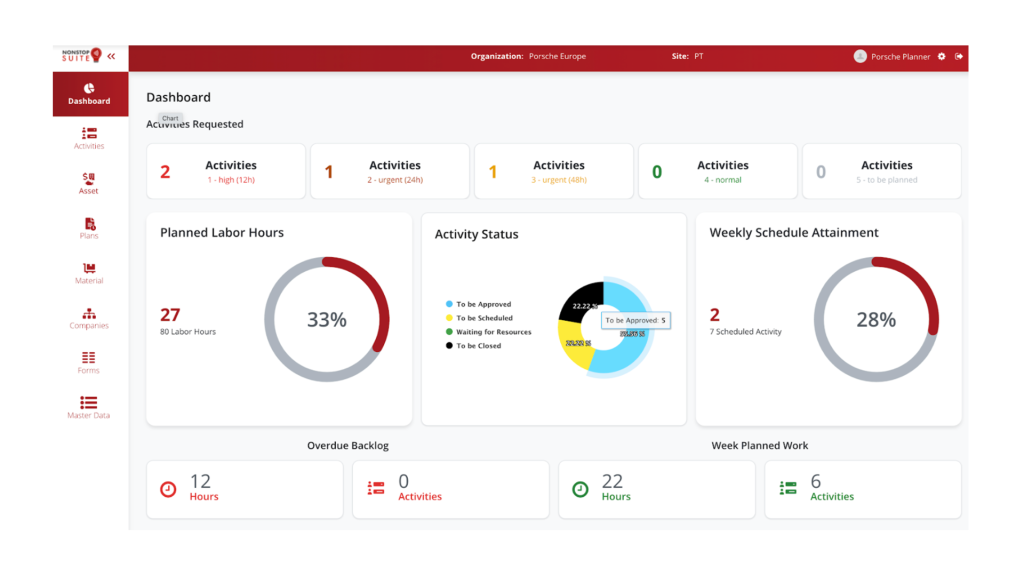6 Min Read

It is likely not an exaggeration to say that competition has never been more intense in the business world. Moreover, this competition has only increased as more companies as more companies use software products and cloud based solutions.
As a result, businesses have had to implement improvements in their internal business operations to stay competitive and increase the efficiency of their services. One such way that companies can improve internal business processes is by using cloud based work management software and techniques.
The overall purpose of work management is to improve productivity in all crucial business processes and improve project outcomes. Additionally, work management will also improve a company’s services, benefitting both clients, employees, and managers. As a result, businesses will be more competitive and thrive in the contemporary marketplace.
Yet, ensuring that business processes are proceeding smoothly, such as resource management, that project timelines are on course, and that the correct tasks are being handled requires work management systems to facilitate all these simultaneous moving parts. So, what is a work management system exactly?
Purpose of a Work Management System

As mentioned, a work management system is a series of tools and techniques used to support projects and fulfil the company’s mission. A successful work management system will ensure the smooth functioning of resource management, time management, project management, and task management. The successful management of these aforementioned processes is vital for companies to succeed.
Now, the use of a system means that work management is an organized endeavour to ensure that the productivity of a company’s teams is optimized, and that work processes are as efficient as possible. There are several ways that managers can proceed with implementing work management solutions.
In the past, resource management, time management, task management, and monitoring team collaboration was completed manually. With a manual work management system, crucial processes’ efficiency was much slower than they are today. For example, document sharing would be slower, time tracking and being able to track progress on both individual projects and across the company would be slower, too.
Most importantly, with manual work management solutions, companies would find it challenging to transform essential processes, such as resources management and task management, to benefit the company truly. However, the introduction of work management software transforms crucial business processes, improves productivity, and helps improve workflow structure.
Due to the spread and improvement of technology and software, work management systems now have software solutions as their foundation. Work management software has revolutionized the work management process with the introduction of work management tools. These work management tools include project and task management tools; additionally, companies with work management software can manage resources more efficiently. This software also enables centralized communication between multiple team members and between teams in different departments. Additionally, work management streamlines many operations that were previously slow and cumbersome.
Again, the purpose of work management software (and the work management systems) is to improve internal company processes to make businesses more competitive, improve efficiency, increase productivity, and ultimately offer better services to their clients.
Regarding the specific features of work management software which supports work management systems, there are a few features and tools which companies of all sizes can benefit from.
Firstly, there is an emphasis on personal management. Remember, work management is the interaction of various company processes (managing resources, tasks, and time) and human worker processes. Thus, a work management system supported by the right software can automate repetitive tasks. This allows manager and employee time to be spent on core tasks, improving overall business operations.
Time tracking/management and performance management are essential features of work management systems and software. Specifically, both features focus on monitoring teams’ performance on completing projects. Performance management entails tracking a team’s work performance and ensuring that projects are on track to completion. Based on the trends they identify in their teams’ performance, managers can introduce improvements to existing workflow structures.
Time tracking tools enable managers to see when employees have checked in, checked out and the time spent by teams work a project. While time management tools such as these look simple, they are crucial for improving company processes. For example, these tools enable managers or project managers to plan necessary overtime pay, assemble and predict project resources, and plan capacity for the future.
Moreover, another important dimension of team collaboration is ensuring that employees do not work on too many work management applications. After all, a work management system focuses on integrating different business and work processes elements. Having more work management applications than is required will only reverse this; moreover, communication between teams within and between departments will be inhibited if too many applications are used. To facilitate teamwork on a project, work management software must have an email notifications feature, message boards for team members to communicate in real-time, and file storage features. File storage is vital for projects to succeed as team members can share essential documents instantly.
Additionally, project management tools ably support time management tools. However, before proceeding, it should be noted that there remains some confusion over the differences between project management and work management. We will cover the differences between these two later; but, for now, project management is best thought of as an element of work management.
Thus, a work management system must embody the principles of project management. Essentially, project management involves using skills, tools, and techniques to plan and complete projects. A work management system (and software) must support the project manager throughout the project life cycle.
Thus, project management tools must support project managers’ ability to initiate plans, assign tasks, allocate resources, track work progress, and share updates with teams. With the aid of a project management tool, businesses can keep track of their projects and tasks, increase productivity, maximize efficiency and meet their clients’ expectations.
Smarter Asset Tracking With NFC Tags
Learn more about how NonStop Suite's NFC Asset Tracking Solution can help your Enterprise streamline operations to new heights.
Get A Free Product Tour
Who Needs a Work management Software?
Businesses of most sizes can take advantage of work management software. Work management software is now forming the work management framework for most companies; so if you do not have a solution already, be sure to purchase one soon! They represent a significant improvement over manual work management methods and can streamline workflows and better manage employees’ time.
However, the business must select the right software for their business. There are plenty of solutions, but the one ultimately chosen for integrating workflows is up to the company itself. Before selecting a solution, businesses must first identify which aspects of work management they wish to improve before purchasing it.
How Business Processes Can Benefit From Work Management Systems?
Work management systems, ably supported by work management software, help businesses’ work management process in several ways. Let’s cover some of these ways now.
Keep the Workload Balanced
With the help of work management software, you can gain insight into the individual tasks assigned to employees and the progress made. Essentially, this means that you can ensure tasks are divided between team members proportionally and that new jobs are given to those who have completed their work.
With the workload fairly balanced, your teams can complete their projects more efficiently and timely, making for happy clients and shareholders.
Track Your Time And Progress
When it comes to completing projects, it is helpful for managers to have a ‘bird’s eye view’ of all current processes, which is what management systems enable. Managers can spot issues early and assign the necessary resources to fix any potential problems with such a view.
Prioritize And Organize Tasks
Arguably, task management tools are one of the most critical elements of a work management system. With a task management tool, you can structure your tasks in order of priority. This is especially helpful if you have both project and non-project tasks which need addressing.
Additionally, work management tools will have additional features that help you assign tasks, track progress, and enable team collaboration to guarantee that employees will complete all outstanding tasks.
Visualize Your Workflow
In addition to creating task lists, some software solutions enable you to create visual work management tools – such as dashboards and Kanban boards. You can also create visuals for custom workflows that divide each project into smaller tasks. With this feature, you can also see the extent to which teams have completed their projects.
Work Management Software VS Project Management Software

A Brief Note On Project Management Vs Work management:
Essentially, the main difference between the two terms is one of scale. Project management focuses on instigating, managing, and completing projects. Projects, of course, are unique in nature, time-bound, and have limited but clear objectives which define their success. Moreover, a project manager will only apply workflow structure to the individual project they are completing.
By contrast, the focus of work management is much broader. It is focused on every element of a business’ work processes. Essentially, when businesses focus on work management, they must ‘zoom out’ to see every piece of the puzzle in their business.
Thus, project management software helps businesses manage individual projects. To this end, the software is more limited in scope and is paired with the tenants of project management – such as budgeting, resources, and deadlines. On the other hand, work management software is far broader and offers more flexibility – for doing both project and non-project tasks.
Additionally, as we have covered, work management software covers work processes throughout an entire business instead of only focusing on one project. Finally, work management software is used to streamline and automate many repetitive processes found in a company; project management software does not focus on this. Ultimately, work management tools also aim to facilitate communication between members using file storage, email notifications, and message boards.
Wrapping Up!



Should your company wish to base its work management system on software, the best place to start would be to consult with the NonStop Group.
The NonStop Group has a wealth of experience helping a diverse range of clients – including companies in the logistics, transport, and oil & gas industry. When the NonStop Group assisted these companies, their productivity greatly improved due to replacing manual work management solutions.
Should you require these services and want to improve productivity and increase efficiency at your company, be sure to contact the NonStop Group today!

